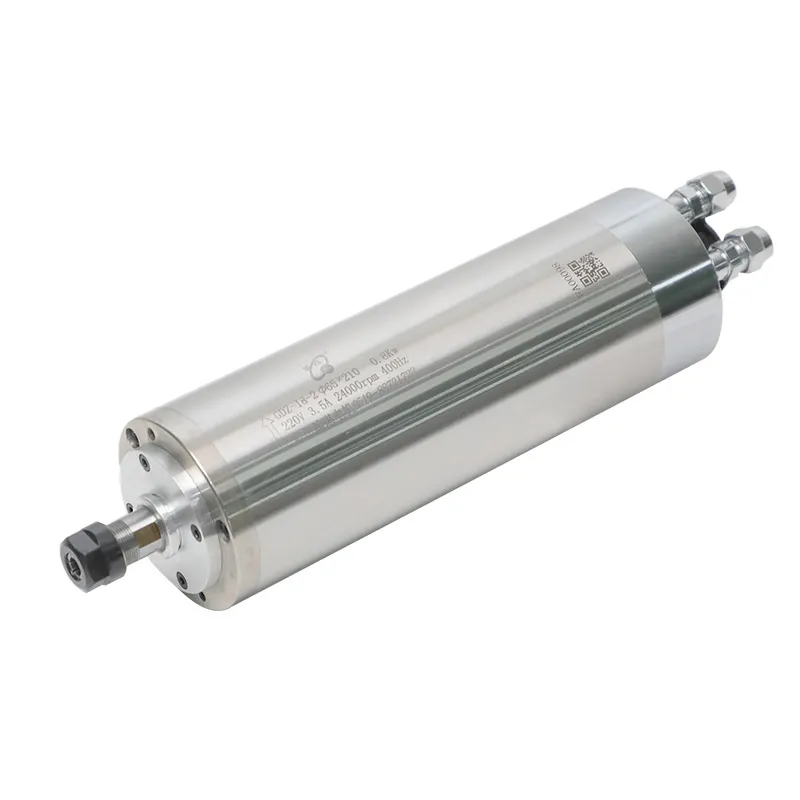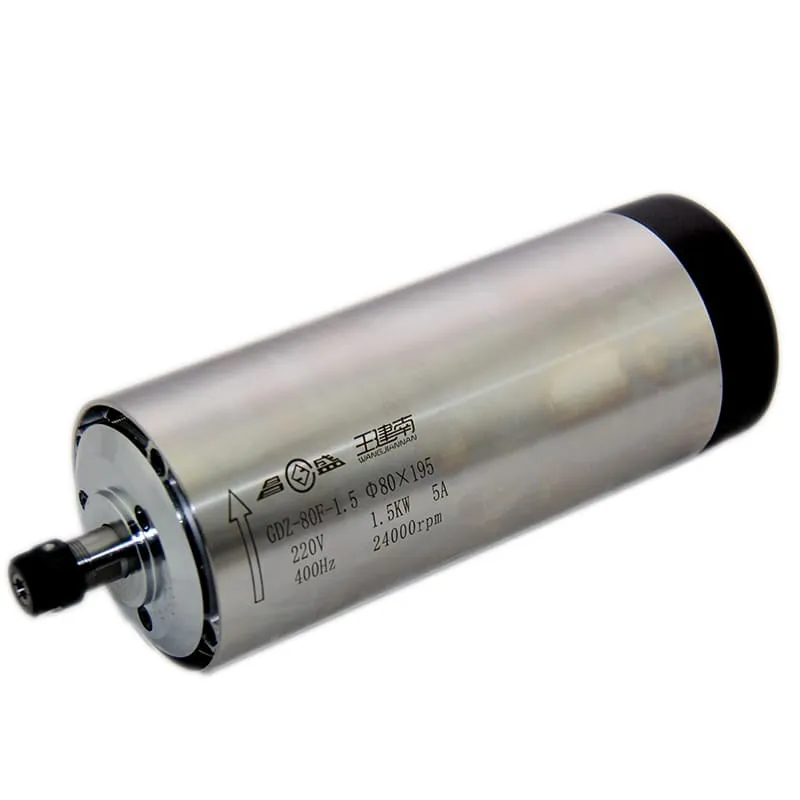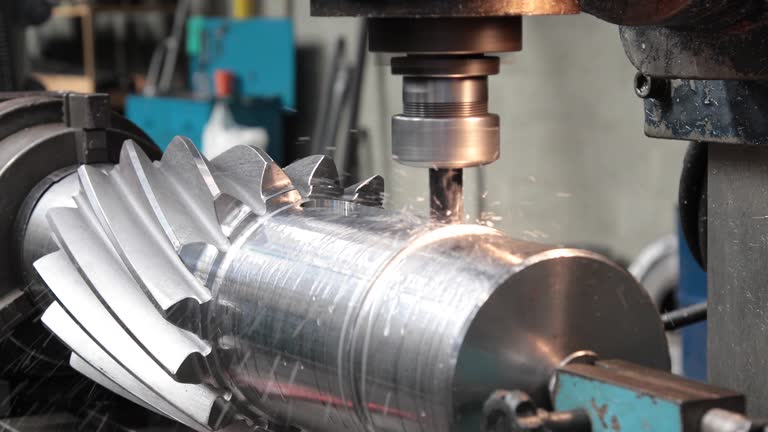CNC machines have revolutionized modern manufacturing by providing a level of precision, efficiency, and repeatability that manual processes simply cannot match. In this article, we will explore what CNC machines are, how they work, the various types available, and their significance in the manufacturing sector. From understanding the basics of CNC to exploring advanced features, this guide will help you comprehend the many dimensions of these incredible machines.
Understanding CNC: What Does CNC Stand For?
CNC stands for Computer Numerical Control. At its core, a CNC machine is a tool that is controlled by a computer. The computer is programmed with instructions, often called G-code, which dictate how the machine should move and what actions it should perform. CNC machines automate the manufacturing process, reducing human error while increasing speed and precision.
How Do CNC Machines Work?
The operation of a CNC machine involves several key components:
- Controller: The central computer system that processes the instructions and controls the machine’s operations.
- Spindle: This component holds and spins the cutting tool, executing precise cuts and operations.
- Tool Changer: Allows the machine to switch between different tools automatically during a cycle, such as switching from a milling bit to a drill bit.
- Axes: Typically X, Y, and Z represent linear movements in three dimensions, while advanced machines may include A, B, and C rotational axes.
The machine works by interpreting the G-code, which tells it when to move, how fast to move, what depth to cut, and what tool to use. The precision of this process ensures that parts are machined to exact specifications, which is critical in industries like aerospace and automotive.
Types of CNC Machines
There are several different types of CNC machines, each designed for specific purposes. Let’s explore the major types in detail.
1. CNC Milling Machines
CNC milling machines are used to cut and shape solid materials like metal and plastic. These machines have rotating cutting tools that can move along multiple axes, allowing for the creation of complex geometries.
- Applications: Producing metal parts, mold-making, tool production.
- Spindle: The 2.2KW ER20 Air-Cooled Spindle is a great choice for reliable, high-speed operations.

2. CNC Lathes
CNC lathes are used primarily for turning operations, creating cylindrical parts by rotating the workpiece against a stationary cutting tool.
- Applications: Creating components like shafts, bushings, and pulleys.
- Precision: CNC lathes can achieve extremely tight tolerances, which is crucial for components that require exact fits.
3. CNC Routers
CNC routers are often used for cutting softer materials like wood, foam, and plastics. They are ideal for projects involving complex designs, engraving, or sign-making.
- Applications: Woodworking, cabinetry, sign-making.
- Tool Flexibility: CNC routers can switch between tools, such as v-bits for engraving and end mills for cutting.
4. CNC Plasma Cutters
Plasma cutters use a high-powered plasma torch to cut through metal. These machines are widely used in fabrication and manufacturing processes.
- Materials: Plasma cutters can cut through various metals including steel, aluminum, and brass.
- Usage: Ideal for cutting metal sheets into intricate shapes quickly and accurately.
5. CNC Laser Cutters
Laser cutters use a focused laser beam to cut or engrave materials. These machines are perfect for creating precise, intricate designs.
- Applications: Jewelry making, engraving, sheet metal cutting.
- Precision: Laser cutters can create intricate cuts that are impossible with traditional methods.
6. CNC Pick and Place Machines
These machines are used in electronics to precisely place components onto circuit boards.
- Applications: PCB assembly, electronic device production.
- Automation: Speeds up the production of electronic components by automating repetitive placement tasks.
Advantages of CNC Machines
CNC machines have become integral to modern manufacturing for a number of reasons. Here are some key advantages:
1. High Precision and Accuracy
CNC machines provide incredible precision and repeatability, which is crucial in industries that require consistent, high-quality production.
- Repeatability: They can replicate the same part over and over with minimal deviation.
- Tight Tolerances: Parts can be machined to within microns of their specifications, which is essential for aerospace and medical industries.
2. Reduced Labor Costs
Once programmed, a CNC machine can run with minimal supervision, which leads to reduced labor costs. Operators are still required to set up and monitor the machine, but the level of direct intervention is much lower compared to traditional machining methods.
- Automation: The use of automatic tool changers and advanced programming reduces the need for manual tool changes.
- Less Human Error: By following computer-generated instructions, the likelihood of mistakes is greatly minimized.
3. Flexibility and Versatility
CNC machines are incredibly versatile and can be used to machine a wide variety of materials, including metal, wood, plastic, and composite materials.
- Quick Changeovers: CNC machines can be programmed to switch tasks quickly, reducing setup times for different jobs.
- Tool Variety: Different tools such as drills, end mills, and taps can be used to create complex parts.
CNC Machine Programming: G-Code and CAM Software
The operation of a CNC machine is based on a series of instructions known as G-code. G-code tells the machine where to move, how fast to move, what tool to use, and when to cut. Creating G-code requires either manual coding or specialized software.
1. Understanding G-Code
G-code is the standard language used to control CNC machines. Each line of G-code is a command that instructs the machine on how to proceed.
- G00: Rapid positioning, which moves the tool quickly between points without cutting.
- G01: Linear cutting, used to machine straight-line paths at a controlled speed.
- G02/G03: Clockwise and counterclockwise arcs, respectively.
2. CAD and CAM Software
To create G-code, most users rely on CAD (Computer-Aided Design) and CAM (Computer-Aided Manufacturing) software.
- CAD Software: This software, such as AutoCAD or Fusion 360, is used to design the parts that will be machined.
- CAM Software: CAM software converts CAD designs into G-code. Programs like Mastercam and Fusion 360 are popular for their versatility and ease of use.
Fusion 360, for example, allows users to design parts and generate toolpaths in one integrated platform, which streamlines the entire CNC machining process.
CNC Machine Components: Spindle, Tool Changer, and Controllers
CNC machines comprise several critical components that work together to ensure precise machining. Let’s explore some of the most important components.
1. Spindle
The spindle is one of the most important parts of a CNC machine. It holds the cutting tool and rotates at high speeds to carry out the machining operations.
- Types of Spindles: Air-cooled and water-cooled are the two most common types. Air-cooled spindles are easier to maintain, while water-cooled spindles, such as the 24000RPM 0.8KW ER11 Water-Cooled Spindle, provide better temperature regulation.

2. Tool Changer
The tool changer allows the machine to switch between different tools during a machining cycle, which enhances productivity.
- Automatic Tool Changers (ATC): These are commonly found in high-end CNC machines and are crucial for reducing machining time.
3. Controllers
The controller is the computer system that interprets the G-code and controls the machine’s movements. It ensures that the tool paths are followed precisely, enabling the machine to produce high-quality parts.
CNC Machining Processes
CNC machines are versatile and can be used for various machining processes. Here are some of the common CNC processes used across industries.
1. CNC Milling
In CNC milling, a rotating cutting tool removes material from the workpiece to create the desired shape. It is widely used for parts with complex geometries.
- Materials: Suitable for metal, plastic, and wood.
- Tools Used: End mills, drills, face mills.
2. CNC Turning
CNC turning involves rotating the workpiece while a stationary cutting tool removes material. This process is primarily used for cylindrical parts.
- Products: Shafts, bushings, cylindrical housings.
- Accuracy: CNC turning offers high precision and can achieve very tight tolerances.
3. CNC Drilling
CNC drilling is used to create holes in the workpiece. Unlike traditional drilling, CNC drilling can produce holes at specific angles and precise depths.
- Tools: Drills, center drills, countersinks.
- Advantages: Consistent and repeatable results for high-volume production.
Frequently Asked Questions About CNC Machines
1. What industries use CNC machines?
CNC machines are used in a wide range of industries, including aerospace, automotive, medical, electronics, and furniture manufacturing. These industries rely on CNC machines for their ability to produce high-quality, precision components at scale.
2. What is G-code and why is it important?
G-code is the language that CNC machines use to operate. It tells the machine where to move, how fast to move, and when to start or stop cutting. Without G-code, CNC machines wouldn’t know how to produce the parts required.
3. How does a CNC machine improve manufacturing?
CNC machines improve manufacturing by providing consistent, repeatable precision, reducing human error, and increasing production speed. They are able to work 24/7 with minimal human intervention, significantly boosting efficiency.
4. Can CNC machines work with any material?
CNC machines can work with a wide range of materials, including metals (like aluminum, steel, and brass), plastics, wood, and composite materials. The type of material depends on the capabilities of the specific CNC machine and the tooling used.
5. What is the difference between CNC milling and CNC turning?
CNC milling involves a rotating cutting tool that moves across the workpiece, removing material to shape it. CNC turning, on the other hand, involves rotating the workpiece while a stationary cutting tool removes material. Milling is generally used for creating parts with complex geometries, while turning is used for cylindrical parts.
Conclusion
CNC machines have transformed the way manufacturing is done by offering unparalleled precision, efficiency, and versatility. From milling and turning to laser cutting and plasma cutting, CNC machines are used across industries to create everything from tiny medical implants to large aerospace components. Whether you’re a hobbyist looking to explore CNC machining or a business seeking to improve production efficiency, understanding CNC machines is the first step toward success.
If you are considering enhancing your CNC capabilities, investing in the right tools is crucial. Visit Spindle Motor Shop to explore a range of high-quality CNC spindles, such as the 1.5KW ER11 Round Air-Cooled Spindle.  The right spindle can make a significant difference in achieving the precision and reliability your projects require.
The right spindle can make a significant difference in achieving the precision and reliability your projects require.
By understanding the types, capabilities, and components of CNC machines, you can make informed decisions that best suit your manufacturing needs, ultimately leading to higher quality products and improved productivity.

